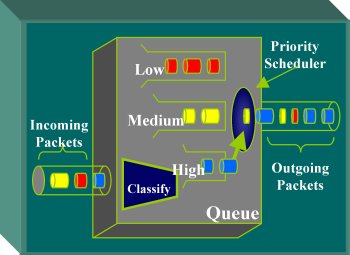|
|

|
|
NAS NETWORKING RESOURCES
At the NASA Advanced Supercomputing (NAS) facility, innovative, high-performance networks are vital to the delivery of supercomputing resources to NASA's scientific user community.
Network engineers at the NAS facility fulfill two very important roles: to advance the state-of-the-art in networking, and to evaluate and implement appropriate networking technologies for NASA high-performance computing customers and remote NASA missions.
Networking Highlights
Network Management: The NAS Networking group developed PCMon, which supports detailed analysis of individual IP packet flows. Monitoring tools typically provide information relating to overall performance of the aggregate traffic in the core of the network, but do not provide insight into the performance of a specific application or IP connection. PCMon enables relative performance measurement (bandwidth, utilization, latency) between competing IP traffic flows, as well as the more traditional measurements of performance on an end-to-end basis and in the core network.

Image above: The NAS Networking group developed PCMon, which supports detailed analysis of individual IP packet flows
Nomadic Networking: Developments in Nomadic Networking technologies make it possible for NASA to do science and engineering in locations that are not serviced by traditional wired communication infrastructures. Specific objectives include providing energy-efficient protocols for sensor and mobile networks, providing self-configuring sensor networks in challenging environments, developing network QoS techniques for mobile environments, and demonstrating nomadic and mobile communications technologies in remote or extreme environments. These technologies will support planetary exploration, help establish virtual presence throughout the solar system, and enable effective interactions between humans and robotic assistants.

Image above: Nomadic Networking technologies make it possible for NASA to do science and engineering in locations that are not serviced by traditional wired communication infrastructures.
Quality of Service: NREN is using quality of service (QoS) in order to provide preferential service to specific applications or classes of applications. The team's objectives are to commit networking resources to specific applications and to ensure that values of bandwidth, latency, jitter, and packet loss parameters stay within acceptable ranges. Furthermore, we provide consistent latency and jitter reduction for specific applications. The quality of service technology is one of the foundations of NREN's Adaptive Networking efforts.

Image above: Quality of Service uses network queuing to separate and give preference to packets classified with high priority.
Networking Services:
The NAS Networking group develops and operates capabilities built upon wide and local area network systems. These capabilities can be divided up into four functional areas:
- Wide Area Network (WAN)
- Columbia Local Area Network (LAN)
- Engineering and Operations
- User Services and Outreach
Wide Area Network (WAN): The NASA Research and Education Network (NREN) WAN provides a wide area, high-speed network for large data distribution and real-time interactive applications. In addition, NREN provides access to NASA research and engineering communities, based on user requirements, an to federal and academic entities via peering with the High Performance Research and Engineering Networks (HPRENs).

Image above: The NAS WAN provides a wide area, high-speed network for large data distribution and real-time interactive applications.
Columbia Local Area Network (LAN): The Columbia Local Area Network (LAN) Project provides networking support for the Columbia Project at NAS facility. This work fulfills the goals of both the LAN and WAN environments. As a result, the mission is to improve and maintain the NAS local network environment, advance the state-of-the-art in networking, and evaluate and implement appropriate networking technologies as well as provide remote NASA high-performance computing customers the most efficient and seamless means for accessing limited and shared resources at a low cost, while maintaining high bandwidth, high reliability, and low latency.
Engineering and Operations: The NAS network engineering efforts support the development and implementation of the LAN and WANs. This work includes contracting in order to support the WAN backbone, local loops, and peering points. In addition, this work includes engineering design related to the WAN peering, regional networks, routing, switching, network, and system management. The NAS Networking Operations effort also supports maintenance and operations of the LAN and WAN, on-call services, troubleshooting, peering and network analysis.
User Services and Outreach: The NAS Networking User Services works with multiple entities, including NASA local area networks (LAN), center high-end computing (HEC) users and facilities, and the users and developers of science and engineering applications.
NAS users can get assistance with networking by sending e-mail to NAS User Services at support@nas.nasa.gov or by calling 800-331-USER (800-331-8737).
|
|
|
|























